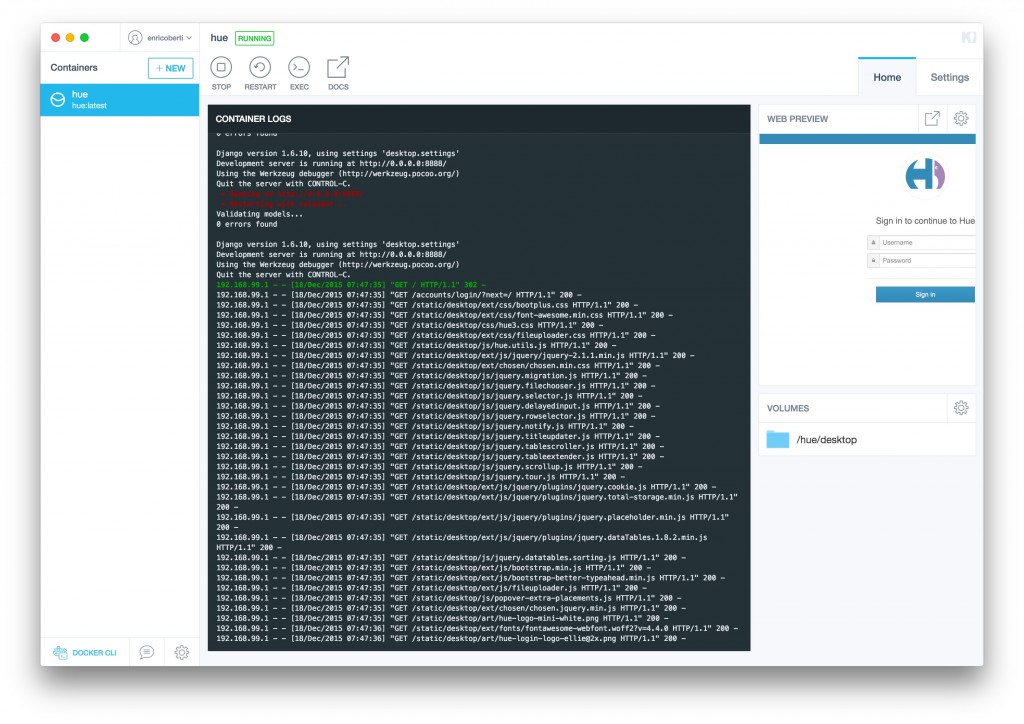

"run.sh" script that It has everything automation (auto-detect your host's OS) setup for you except that, in macOS, you need to have 'xquartz' installed as the only manual effort when running on macOS - not for other Linux (e.g., Ubuntu, or CentOS).That's it! Important: You don't have to do anything setup including xhost, HOSTNAME, etc. try, "./shell.sh" using a new X-terminal, then run "firefox" from command line, you see will Firefox browser popping up on your Desktop.Then, you should see the "xeyes" X11 application showing up on your desktop. It is just as simple as below since "run.sh" script automatically does everything for you. So, you don't have do anything to run X11 on your host machine regardless macOS, Ubuntu, or CentOS (due to the automation inside run.sh). The latest version will automatically do all the necessary X11 setup for you except "the installation of xquartz" (running the 'run.sh' will automatically launch XQuartz). The latest version of "DrSnowbird/jdk-mvn-p圓-x11" already automatically" set up everything for you. Much thanks to for putting together his README which clarified a lot. Debugging steps can be checked from the link above. NB: If all of the above steps were completed successfully, an X window should open on your host which is forwarding from the container. You can also set the env var directly in the container with bash/Dockerfile/etc. This will get X within the container to connect to port 6000 on your host and communicate with XQuartz - the volume mount is entirely unused.

NB: is the DNS name which resolves to your host machine from within your docker container. Pass -e DISPLAY=:0 to any docker image you want to forward X to the host.Also if XQuartz is not running, xhost will start it. NB: This will allow network X11 connections from localhost only, which is fine. In a terminal on the host, run xhost +localhost.

The volume mount is not (and cannot due to an ongoing issue - more details in the original link) be used. This is actually how your docker container will be communicating with XQuartz on the host. NB: After restarting XQuartz, you can run netstat -an | grep -F 6000 to find that XQuartz has opened port 6000. From the XQuartz preferences, in the security tab, make sure Allow connections from network clients is enabled.It also helped me understand why the volume mount doesn't do anything and what's really going on. this link contains the only correctly current version. It seems things have moved a bit underneath all this since 2017, so I created an updated version.įor anyone arriving. In this particular example, DT tag tells that the is a determiner.Thanks for this, it really helped me out! It is the process of assigning a single word POS tag to each token/word in the input sentence.įor example, for the input : From the AP comes this story the output of the tagger is From/IN the/DT AP/NNP comes/VBZ this/DT story/NN, in which the each POS tag escribes what its corresponding word is about. Part-of-Speech tagging is a common sequence-taggin problem in Natual Language Processing. Hidden Markov Model For Parts Of Speech Tagging Tweets with positive sentiments from the those with negative sentiments. Logistic regression is a simple classification algorithm. Installing any of these components, let us first understand what these components are and what are they used for.
#HADOOP DOCKER MAC OS X HOW TO#
In this blog, I will be demonstating how to setup single node Hadoop cluster using Docker on Mac os X.


 0 kommentar(er)
0 kommentar(er)
